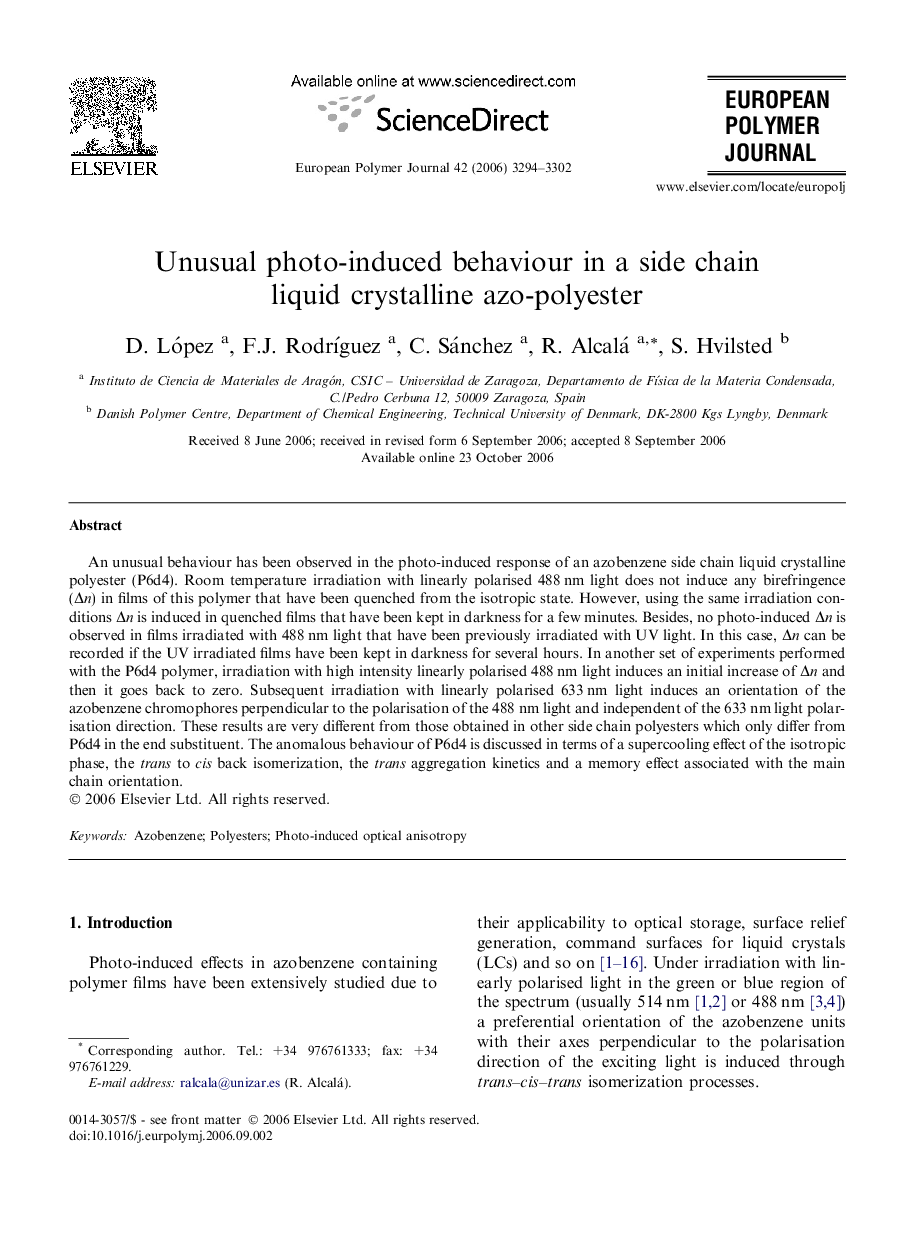| Article ID | Journal | Published Year | Pages | File Type |
|---|---|---|---|---|
| 1396871 | European Polymer Journal | 2006 | 9 Pages |
An unusual behaviour has been observed in the photo-induced response of an azobenzene side chain liquid crystalline polyester (P6d4). Room temperature irradiation with linearly polarised 488 nm light does not induce any birefringence (Δn) in films of this polymer that have been quenched from the isotropic state. However, using the same irradiation conditions Δn is induced in quenched films that have been kept in darkness for a few minutes. Besides, no photo-induced Δn is observed in films irradiated with 488 nm light that have been previously irradiated with UV light. In this case, Δn can be recorded if the UV irradiated films have been kept in darkness for several hours. In another set of experiments performed with the P6d4 polymer, irradiation with high intensity linearly polarised 488 nm light induces an initial increase of Δn and then it goes back to zero. Subsequent irradiation with linearly polarised 633 nm light induces an orientation of the azobenzene chromophores perpendicular to the polarisation of the 488 nm light and independent of the 633 nm light polarisation direction. These results are very different from those obtained in other side chain polyesters which only differ from P6d4 in the end substituent. The anomalous behaviour of P6d4 is discussed in terms of a supercooling effect of the isotropic phase, the trans to cis back isomerization, the trans aggregation kinetics and a memory effect associated with the main chain orientation.
